At the 2025 NVIDIA GTC Conference, CEO Jensen Huang delivered a sweeping keynote that painted the future of computing in bold strokes: a world powered by AI factories, built on accelerated computing, and driven by agentic, embodied AI capable of interacting with the physical world. He introduced the concept of Physical AI—intelligence grounded in real-world physics—and emphasized the shift from traditional programming to AI-developed systems trained on vast data, simulation, and models. From drug discovery to robotics to large-scale digital twins, Huang asserted that the future belongs to those who can design, simulate, and optimize both the virtual and the physical with extraordinary efficiency.
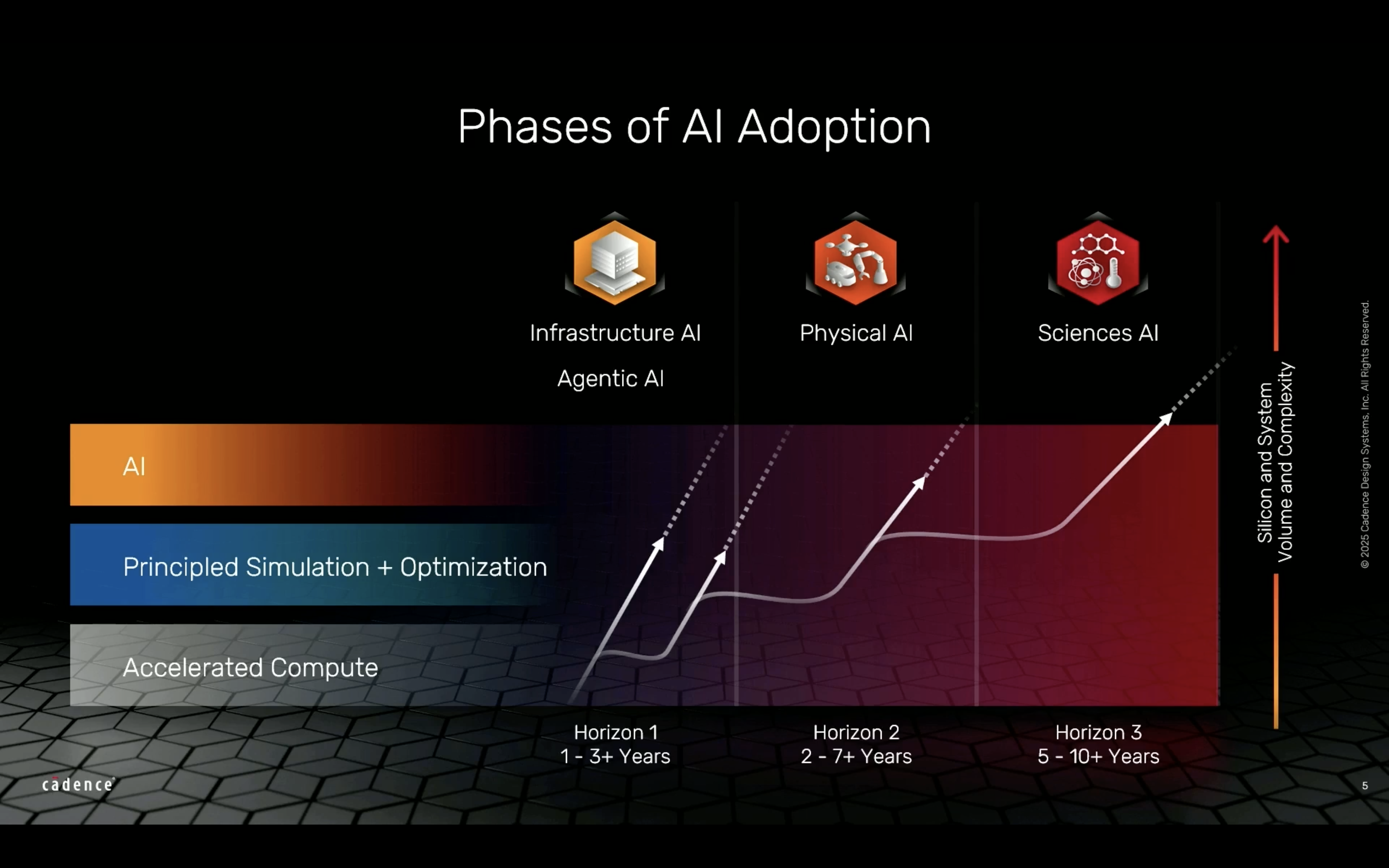
Cadence Enabling the Vision: Accelerating the Infrastructure of AI
It’s within Huang’s visionary context that Rob Knoth, Group Director of Strategy and New Ventures at Cadence, offered a look at how the company is actively enabling the future that Huang painted during GTC 2025. Knoth’s talk provided insight into how Cadence and NVIDIA are building the tools and infrastructure needed to make Huang’s future real. A collaborative approach lies at the heart of Cadence’s work across domains, whether it’s semiconductor design, robotics, data centers, or molecular biology. With the power of NVIDIA’s Grace Blackwell architecture, Cadence is pushing the boundaries of what’s possible in both speed and scale.
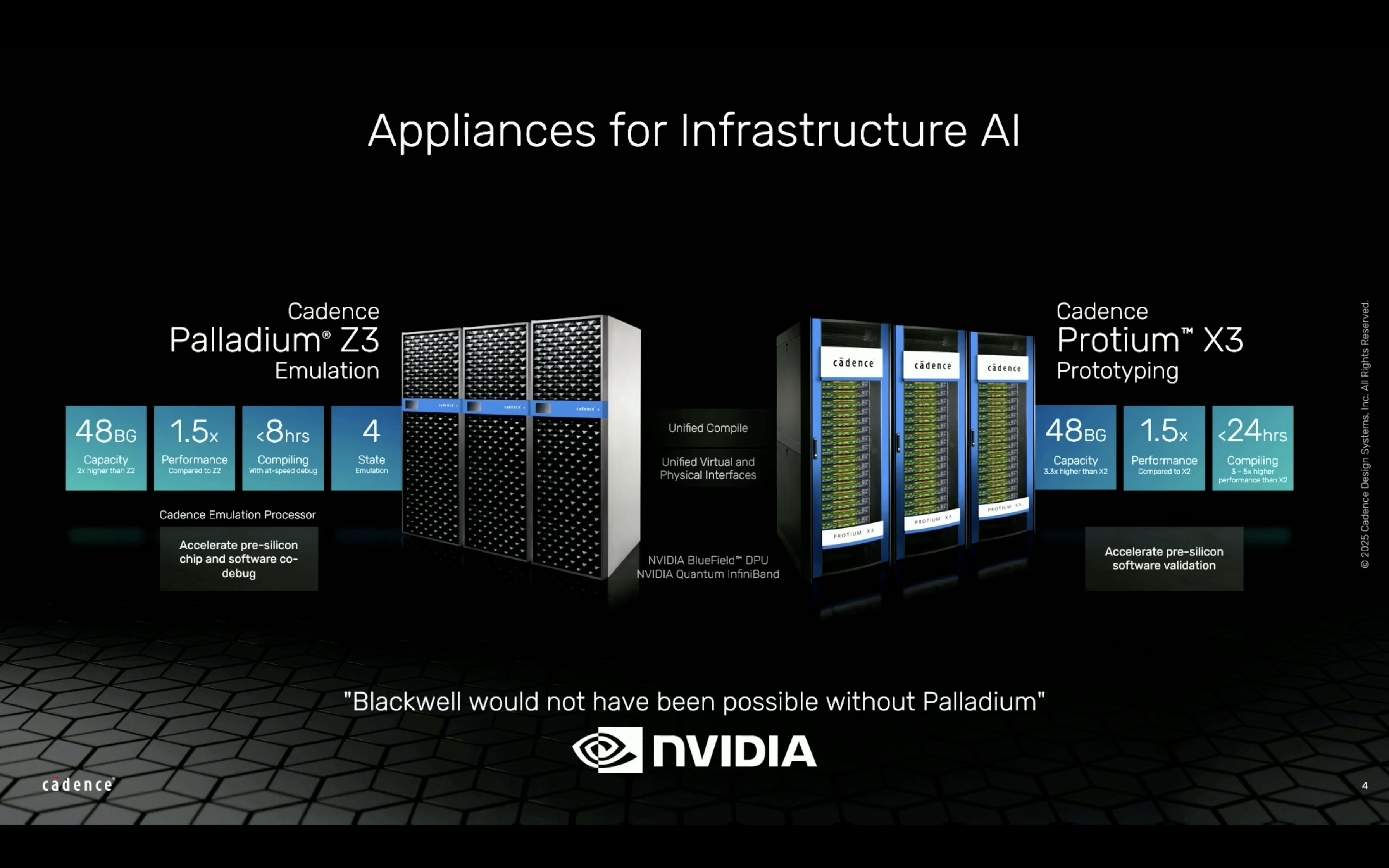
Computational Fluid Dynamics (CFD) Meets Accelerated Compute: The Boeing 777 Case Study
One of the most compelling examples was the simulation of a Boeing 777 during takeoff and landing, performed using Cadence’s Fidelity CFD platform on the Grace Blackwell system. This simulation tackled one of the most complex aerodynamic challenges in aviation and matched experimental results—all executed in a fraction of the time and energy traditional methods would require. It was a proof point of sustainability and efficiency through accelerated compute, echoing Huang’s keynote themes.
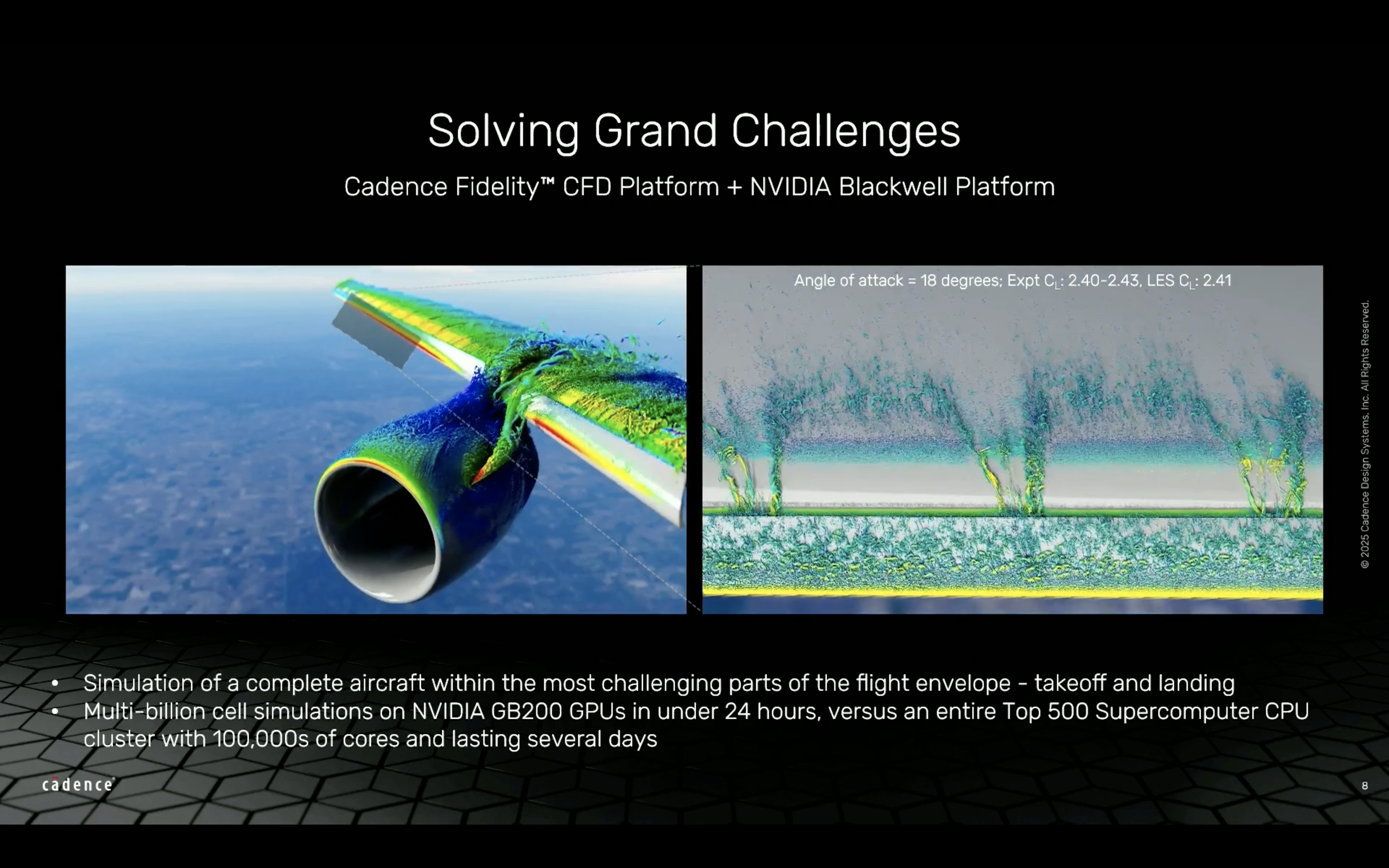
Designing AI Factories: The Role of Digital Twins
Knoth also emphasized Cadence’s leadership in building AI factory infrastructure, highlighting its collaboration with NVIDIA, Schneider Electric, and Vertiv to design digital twins of data centers. These high-fidelity models are powered by Cadence’s Reality Digital Twin Platform and are integral to NVIDIA’s reference blueprint for next-generation AI infrastructure. This work reflects Huang’s emphasis on AI factories as the backbone of the AI-driven economy, where every element is simulated, optimized, and iterated in digital space before deployment in the real world.
Embodied Intelligence: From Robots to Edge Systems
To realize the vision of agentic AI systems, Cadence is bringing its multi-physics solvers to handle everything from thermal dynamics to structural stress, onto accelerated GPU architectures. These tools are essential for designing physical AI systems, such as robots, edge devices, and complex electromechanical machines that need to interact with the real world. Knoth positioned this as a foundational step in enabling the next generation of physical AI, where simulation meets embodiment.
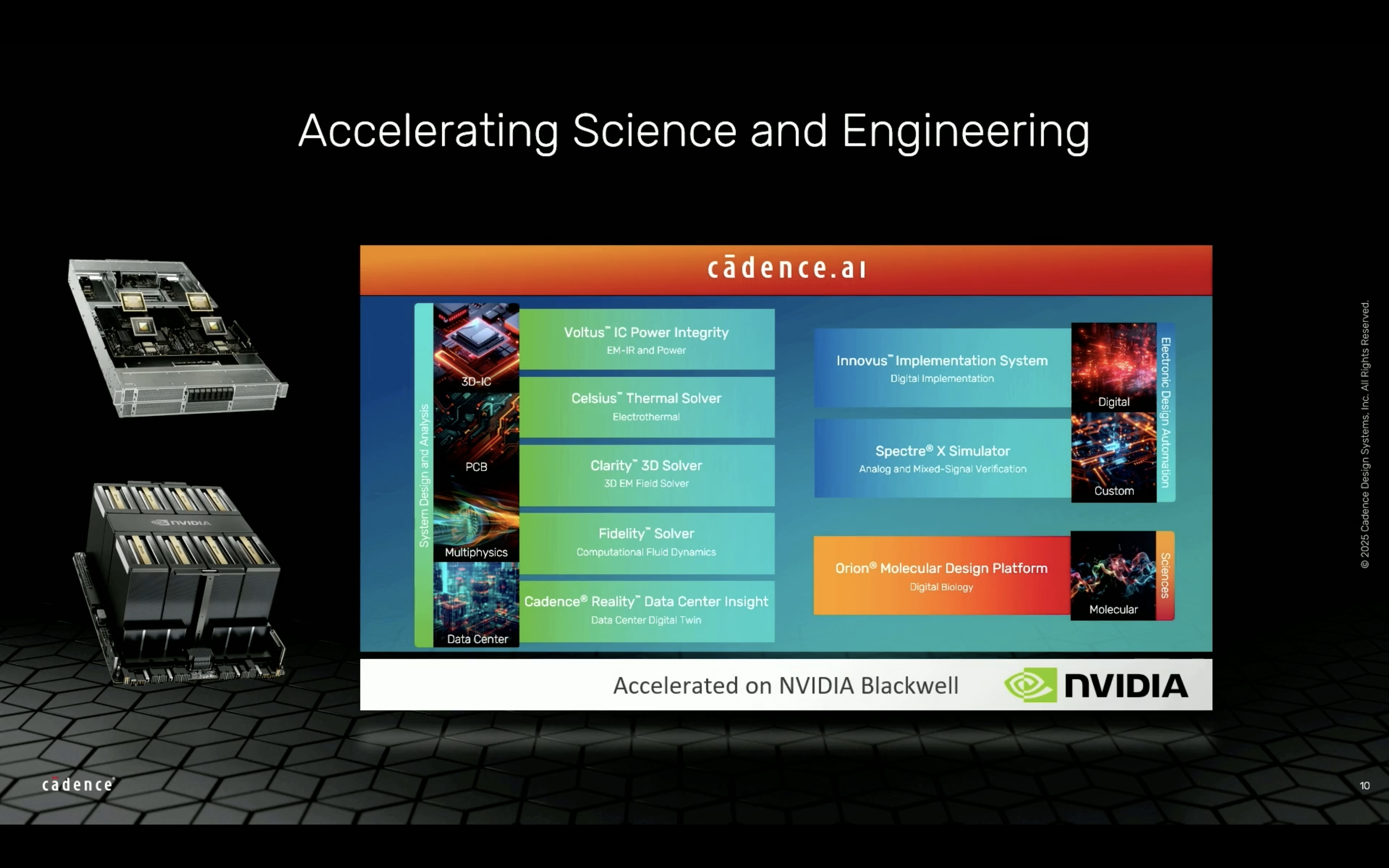
Transforming Drug Discovery: AI Meets Molecular Science
Building on Huang’s vision of AI in life sciences, Knoth shared Cadence’s progress in molecular design and drug discovery. Cadence’s Orion molecular design platform, integrated with NVIDIA’s BioNeMo NIM microservices, brings AI into the molecular modeling process, offering tools for 3D protein structure prediction, small molecule generation, and AI-driven molecular property prediction. These advancements significantly reduce the cost, time, and risk in drug discovery—one of the most complex and resource-intensive areas of science.

The JedAI Platform: Scalable AI for Science and Engineering
Cadence’s Joint Enterprise Data & AI (JedAI) platform provides the glue between these verticals. It’s built to integrate with NVIDIA’s LLM and generative AI technologies, while offering deployment flexibility for on-prem, cloud, or hybrid environments. JedAI powers Cadence’s AI design tools across domains like digital and analog chip design, verification and debug, PCB layout, multi-physics optimization, and data center design and operation. It’s a scalable, customizable foundation to bring AI into every part of the engineering workflow.
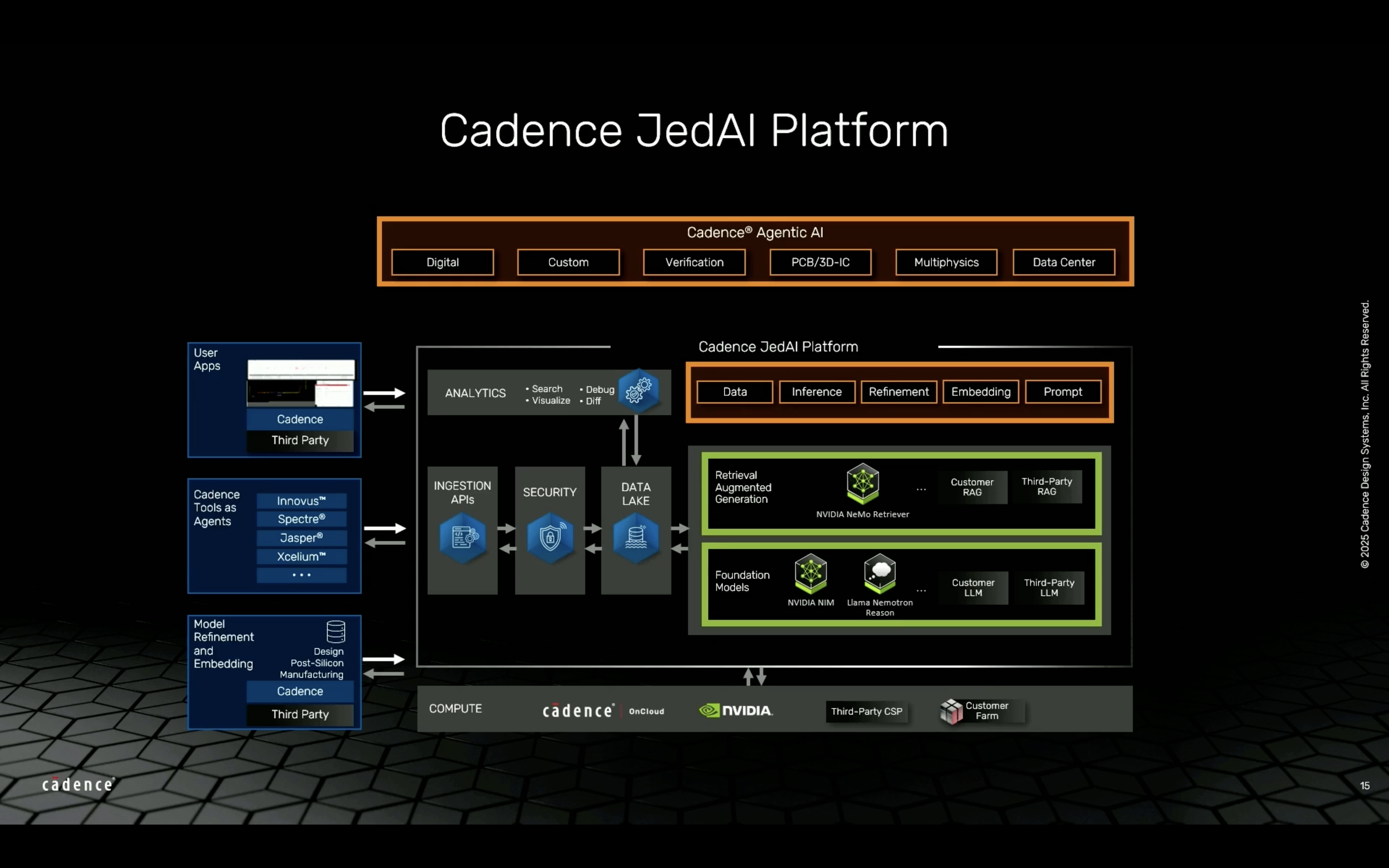
Building an Open Ecosystem: The Alliance for OpenUSD
To support this massive transformation, Cadence and NVIDIA are helping lead efforts in the Alliance for OpenUSD (Universal Screen Description), aiming to create standardized, interoperable component models for everything from chips to entire data center environments. This initiative ties directly to Huang’s vision of an open, composable ecosystem where companies across the stack can contribute to and benefit from shared digital infrastructure standards.
Summary
From digital twins and chip design to molecular simulation and AI co-pilots, Cadence is helping architect the platforms that will power, embody, and apply AI across industries. The company is helping build the physical and digital infrastructure of the AI era.

Also Read:
Big Picture PSS and Perspec Deployment
Metamorphic Test in AMS. Innovation in Verification
Compute and Communications Perspectives on Automotive Trends
Share this post via:
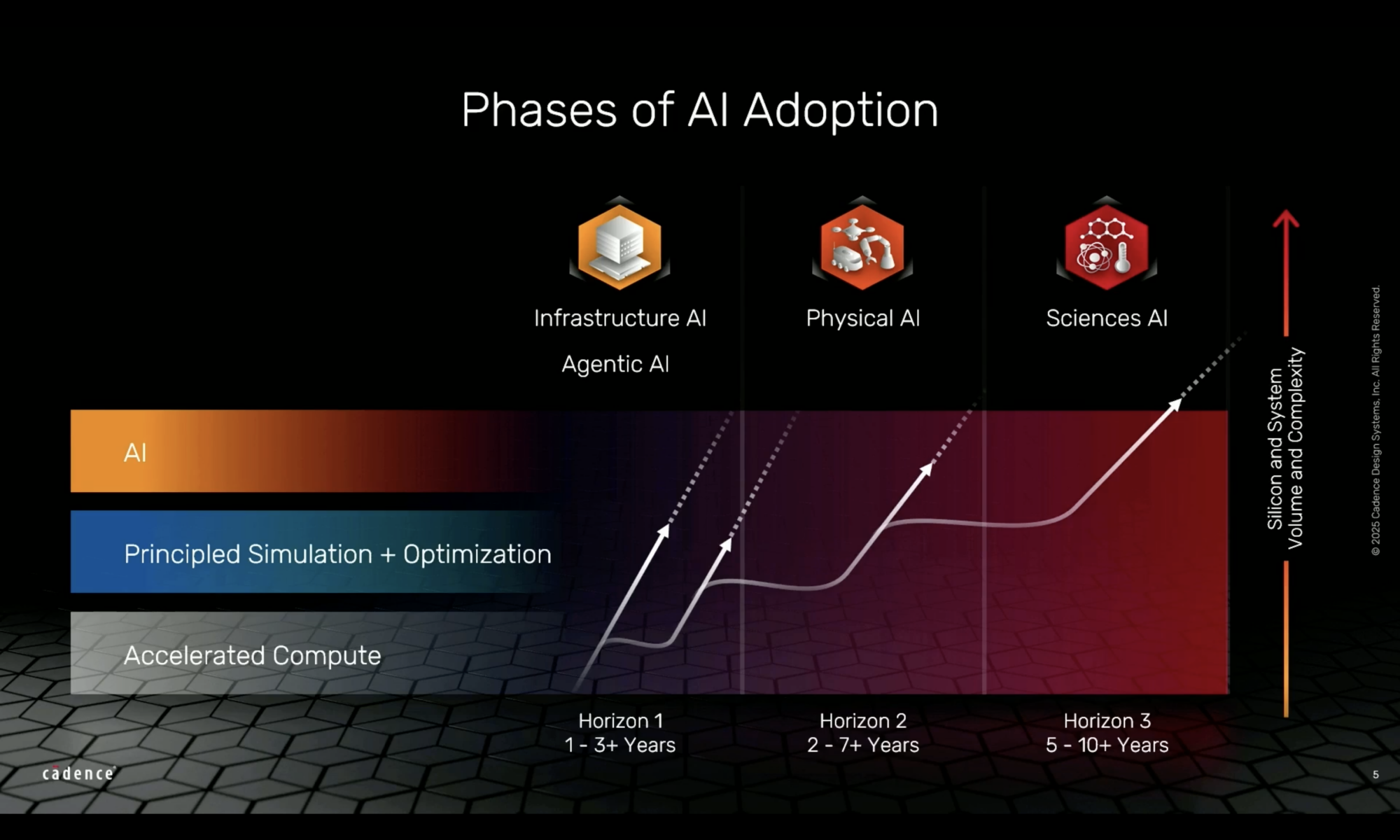




Comments
There are no comments yet.
You must register or log in to view/post comments.